Low-Carbon Concrete Reinforced with Waste Steel Rivet Fibers Utilizing Steel Slag Powder, and Processed Recycled Concrete Aggregate—Engineering Insights
Abstract
1. Introduction
2. Methodology
3. Results
3.1. Compressive Strength
3.2. Splitting Tensile Strength
3.2.1. Analysis of Splitting Tensile Failure Modes
Plain Concrete—0% WSRF
Low Fiber Content—0.2% WSRF
Moderate Fiber Content—0.8% WSRF
High Fiber Content—1.4% WSRF
3.3. Relationship Between Compressive and Tensile Strengths, and the Fiber Content
3.4. Dry Density
3.5. Absorption Characteristics
4. Conclusions
Author Contributions
Funding
Data Availability Statement
Acknowledgments
Conflicts of Interest
References
- Khaertdinova, A.; Maliashova, A.; Gadelshina, S. Economic development of the construction industry as a basis for sustainable development of the country. E3S Web Conf. 2021, 274, 10021. [Google Scholar] [CrossRef]
- Gagg, C.R. Cement and concrete as an engineering material: An historic appraisal and case study analysis. Eng. Fail. Anal. 2014, 40, 114–140. [Google Scholar] [CrossRef]
- Rane, N.; Choudhary, S.; Rane, J. Enhancing Sustainable Construction Materials Through the Integration of Generative Artificial Intelligence, such as ChatGPT or Bard. SSRN Electron. J. 2024, 1, 98–122. [Google Scholar] [CrossRef]
- Plizzari, G.; Mindess, S. Fiber-Reinforced Concrete. In Developments in the Formulation and Reinforcement of Concret; Elsevier: Amsterdam, The Netherlands, 2019; pp. 257–287. [Google Scholar]
- Labib, W.A. Fibre Reinforced Cement Composites. In Cement Based Materials; InTech: London, UK, 2018. [Google Scholar] [CrossRef]
- Paul, S.; Van Zijl, G.; Šavija, B. Effect of fibers on durability of Concrete: A Practical review. Materials 2020, 13, 4562. [Google Scholar] [CrossRef]
- Grover, A.P.; Kumar, K. Sustainability of Using Recycled Steel Fibers in Concrete. J. Sustain. Constr. Eng. Proj. Manag. 2022, 4, 1–8. [Google Scholar]
- Papachristoforou, M.; Anastasiou, E.; Papayianni, I. Durability of steel fiber reinforced concrete with coarse steel slag aggregates including performance at elevated temperatures. Constr. Build. Mater. 2020, 262, 120569. [Google Scholar] [CrossRef]
- Arm, M.; Wik, O.; Engelsen, C.J.; Erlandsson, M.; Hjelmar, O.; Wahlström, M. How Does the European Recovery Target for Construction & Demolition Waste Affect Resource Management? Waste Biomass Valorization 2016, 8, 1491–1504. [Google Scholar]
- Fanijo, E.O.; Kolawole, J.T.; Babafemi, A.J.; Liu, J. A comprehensive review on the use of recycled concrete aggregate for pavement construction: Properties, performance, and sustainability. Clean. Mater. 2023, 9, 100199. [Google Scholar] [CrossRef]
- Aziz, S.Q.; Ismael, S.O.; Omar, I.A. New approaches in solid waste recycling and management in Erbil City. Environ. Prot. Res. 2023, 3, 1–13. [Google Scholar] [CrossRef]
- Song, Q.; Guo, M.; Wang, L.; Ling, T. Use of steel slag as sustainable construction materials: A review of accelerated carbonation treatment. Resour. Conserv. Recycl. 2021, 173, 105740. [Google Scholar] [CrossRef]
- Kumar, P.; Shukla, S. Utilization of steel slag waste as construction material: A review. Mater. Today Proc. 2023, 78, 145–152. [Google Scholar] [CrossRef]
- Shi, C. Steel slag—Its production, processing, characteristics, and cementitious properties. ChemInform 2004, 16, 230–236. [Google Scholar]
- Hassan, H.Z.; Saeed, N.M. Fiber reinforced concrete: A state of the art. Discov. Mater. 2024, 4, 101. [Google Scholar] [CrossRef]
- Chiang, P.; Pan, S. Iron and Steel Slags. In Carbon Dioxide Mineralization and Utilization; Springer: Berlin/Heidelberg, Germany, 2017; pp. 233–252. [Google Scholar]
- Kryeziu, D.; Selmani, F.; Mujaj, A.; Kondi, I. Recycled concrete aggregates: A promising and sustainable option for the construction industry. J. Hum. Earth Future 2023, 4, 166–180. [Google Scholar] [CrossRef]
- Liu, J.; Han, F.; Cui, G.; Zhang, Q.; Lv, J.; Zhang, L.; Yang, Z. Combined effect of coarse aggregate and fiber on tensile behavior of ultra-high-performance concrete. Constr. Build. Mater. 2016, 121, 310–318. [Google Scholar] [CrossRef]
- Mohamed, O.; Zuaiter, H. Fresh Properties, Strength, and durability of Fiber-Reinforced geopolymer and Conventional Concrete: A review. Polymers 2024, 16, 141. [Google Scholar] [CrossRef]
- Candido, R.G. Recycling of Textiles and Its Economic Aspects. In Fundamentals of Natural Fibres and Textiles; Elsevier: Amsterdam, The Netherlands, 2021; pp. 599–624. [Google Scholar]
- Herki, B.M.A.; Ali, A.I.; Smail, Y.S.; Omer, K.M. An Innovative Approach to Enhancing Concrete Sustainability: Utilising Unprocessed Steel Slag with Low CaO and High SiO2 Content. Buildings 2015, 15, 1514. [Google Scholar] [CrossRef]
- ASTM C150/C150M; Standard Specification for Portland Cement. ASTM International: West Conshohocken, PA, USA, 2024.
- Ali, B.; Kurda, R.; Herki, B.; Alyousef, R.; Mustafa, R.; Mohammed, A.; Raza, A.; Ahmed, H.; Fayyaz Ul-Haq, M. Effect of Varying Steel Fiber Content on Strength and Permeability Characteristics of High Strength Concrete with Micro Silica. Materials 2020, 13, 5739. [Google Scholar] [CrossRef]
- BS EN 206:2013+A2:2021; Concrete–Specification, Performance, Production and Conformity. British Standards Institution: London, UK, 2021.
- ASTM C494/C494M–24; Standard Specification for Chemical Admixtures for Concrete. ASTM International: West Conshohocken, PA, USA, 2024.
- Herki, B.M.A. Absorption Characteristics of Lightweight Concrete Containing Densified Polystyrene. Civ. Eng. J. 2017, 3, 594–609. [Google Scholar] [CrossRef]
- BS EN 12390-3:2019; Testing Hardened Concrete–Part 3: Compressive Strength of Test Specimens. British Standards Institution: London, UK, 2019.
- ASTM C496/C496M; Standard Test Method for Splitting Tensile Strength of Cylindrical Concrete Specimens. ASTM International: West Conshohocken, PA, USA, 2024.
- Herki, B.M.A.; Khatib, J.M.; Hamadamin, M.N.; Kareem, F.A. Sustainable Concrete in the Construction Industry of Kurdistan-Iraq through Self-Curing. Buildings 2022, 12, 1318. [Google Scholar] [CrossRef]
- Herki, B.M.A. Combined Effects of Densified Polystyrene and Unprocessed Fly Ash on Concrete Engineering Properties. Buildings 2017, 7, 77. [Google Scholar] [CrossRef]
- ASTM C642; Standard Test Method for Density, Absorption, and Voids in Hardened Concrete. ASTM International: West Conshohocken, PA, USA, 2024.
- Herki, B.M.A. Strength and Absorption Study on Eco-Efficient Concrete Using Recycled Powders as Mineral Admixtures under Various Curing Conditions. Recycling 2024, 9, 99. [Google Scholar] [CrossRef]
- Yoshinaka, F.; Nakamura, T.; Nakayama, S.; Shiozawa, D.; Nakai, Y.; Uesugi, K. Non-destructive observation of internal fatigue crack growth in Ti–6Al–4V by using synchrotron radiation μCT imaging. Int. J. Fatigue 2016, 93, 397–405. [Google Scholar] [CrossRef]
- Park, S.-S. Effect of fiber reinforcement and distribution on unconfined compressive strength of fiber-reinforced cemented sand. Geotext. Geomembr. 2008, 27, 162–166. [Google Scholar] [CrossRef]
- Felekoğlu, B.; Tosun, K.; Baradan, B. Effects of fibre type and matrix structure on the mechanical performance of self-compacting micro-concrete composites. Cem. Concr. Res. 2009, 39, 1023–1032. [Google Scholar] [CrossRef]
- Varghese, A.N.A.; Arulraj, G.P.; Johnson Alengaram, U. Influence of fibers on bond strength of concrete exposed to elevated temperature. J. Adhes. Sci. Technol. 2019, 33, 1521–1543. [Google Scholar] [CrossRef]
- Leporace-Guimil, B.; Conforti, A.; Plizzari, G.A. Evaluation of orientation factors influencing the shear and flexural behavior of elements in steel fiber reinforced concrete. Constr. Build. Mater. 2025, 474, 141054. [Google Scholar] [CrossRef]
- Zheng, Y.; Lv, X.; Hu, S.; Zhuo, J.; Wan, C.; Liu, J. Mechanical properties and durability of steel fiber reinforced concrete: A review. J. Build. Eng. 2024, 82, 108025. [Google Scholar] [CrossRef]
- Zhang, P.; Wang, C.; Guo, J.; Wu, J.; Zhang, C. Production of sustainable steel fiber-reinforced rubberized concrete with enhanced mechanical properties: A state-of-the-art review. J. Build. Eng. 2024, 91, 109735. [Google Scholar] [CrossRef]
- Zhou, M.; He, X.; Wang, H.; Wu, C.; Wei, B. Mesoscale discrete analysis of mechanical properties of steel fiber reinforced concrete. J. Build. Eng. 2025, 105, 112437. [Google Scholar] [CrossRef]
- Hou, S.; Li, K.; Hu, X.; Shi, C. Assessing sampling interval-dependent roughness in fractured steel fiber reinforced concrete using a double-exponential decay model. Cem. Concr. Compos. 2024, 150, 105581. [Google Scholar] [CrossRef]
- Carpinteri, A.; Brighenti, R. Fracture behaviour of plain and fiber-reinforced concrete with different water content under mixed mode loading. Mater. Des. 2009, 31, 2032–2042. [Google Scholar] [CrossRef]
- Khan, R. Fiber bridging in composite laminates: A literature review. Compos. Struct. 2019, 229, 111418. [Google Scholar] [CrossRef]
- Plagué, T.; Desmettre, C.; Charron, J.-P. Influence of fiber type and fiber orientation on cracking and permeability of reinforced concrete under tensile loading. Cem. Concr. Res. 2017, 94, 59–70. [Google Scholar] [CrossRef]
- Vijayaraghavan, J.; Jude, A.B.; Thivya, J. Effect of copper slag, iron slag and recycled concrete aggregate on the mechanical properties of concrete. Resour. Policy 2017, 53, 219–225. [Google Scholar] [CrossRef]
- Mohamed, O.; Ahmed, E.; Najm, O.; Al-Aribe, K.; Hijah, E. Water absorption characteristics and rate of strength development of mortar with slag-based alkali-activated binder and 25% fly ash replacement. Mater. Today Proc. 2023, in press. [Google Scholar] [CrossRef]
- Mekonen, T.B.; Alene, T.E.; Alem, Y.A.; Nebiyu, W.M. Influence of steel slag as a partial replacement of aggregate on performance of reinforced concrete beam. Int. J. Concr. Struct. Mater. 2024, 18, 56. [Google Scholar] [CrossRef]
- Khan, M.A.; Khan, Q.U.Z. Optimizing hybrid fiber concrete: An experimental analysis of steel and polypropylene fiber composites using RSM. Mater. Res. Express 2025, 12, 025304. [Google Scholar] [CrossRef]
- Al-Rekabi, A.H.; Al-Marmadi, S.M.; Dhaheer, M.A.; Al-Ramahee, M. Experimental investigation on sustainable fiber reinforced self-compacting concrete made with treated recycled aggregate. In AIP Conference Proceedings; AIP Publishing LLC: Melville, NY, USA, 2023. [Google Scholar]
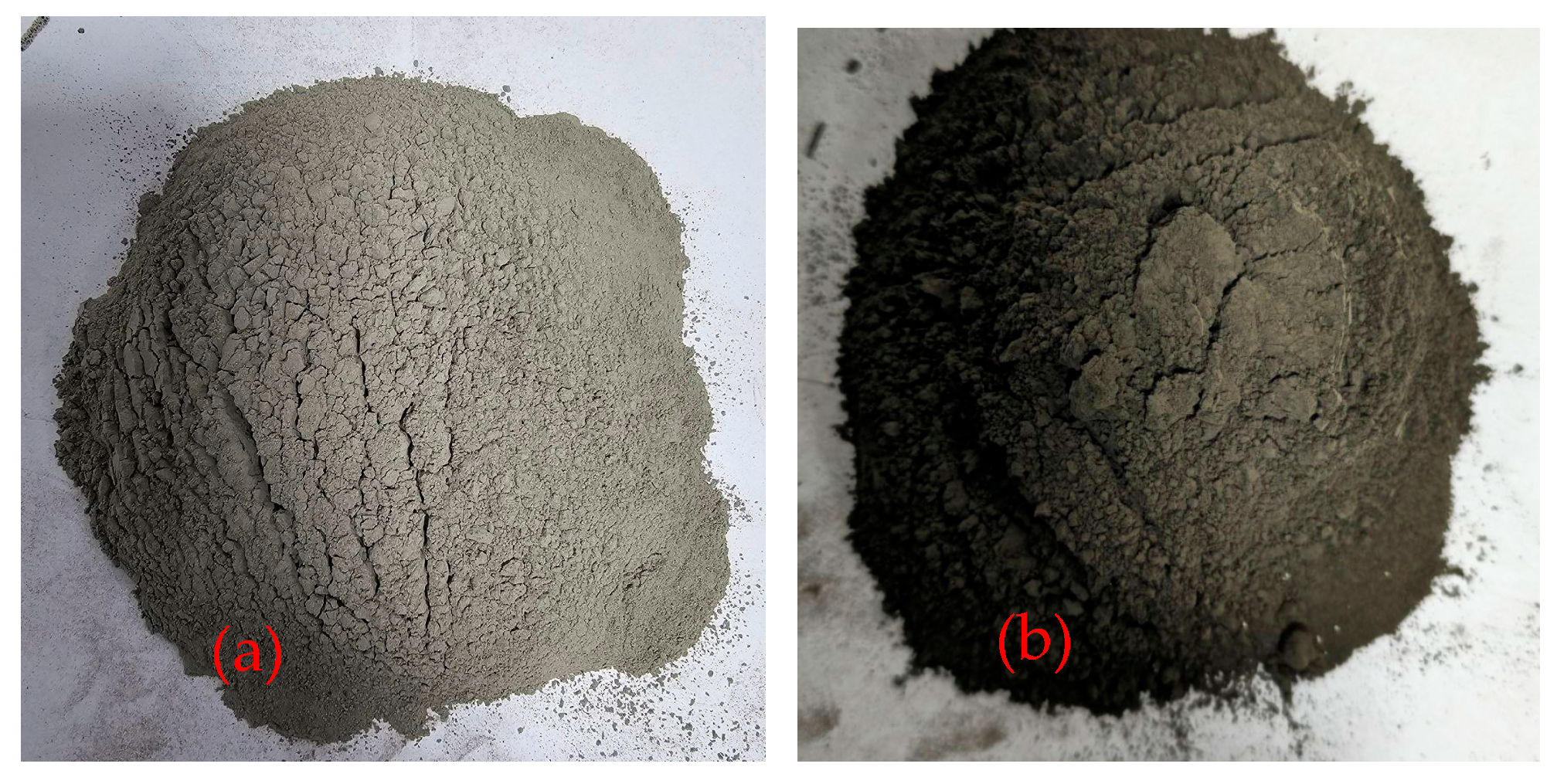
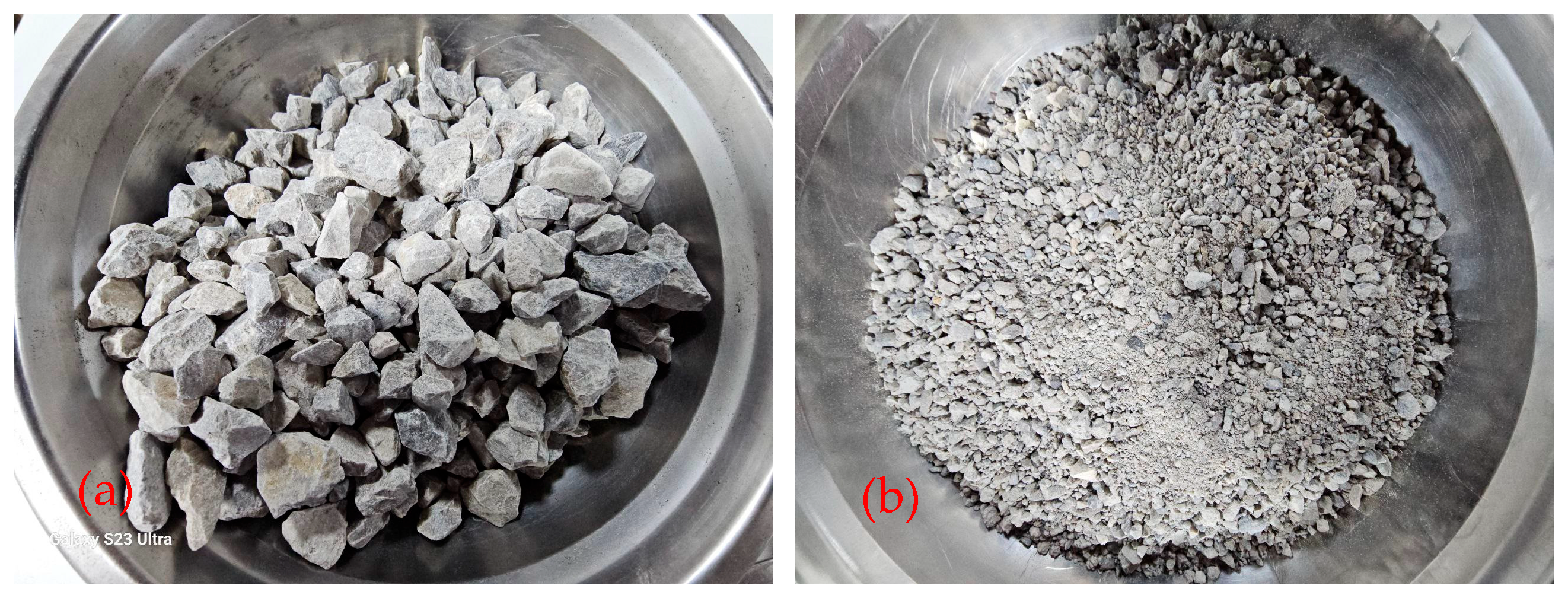
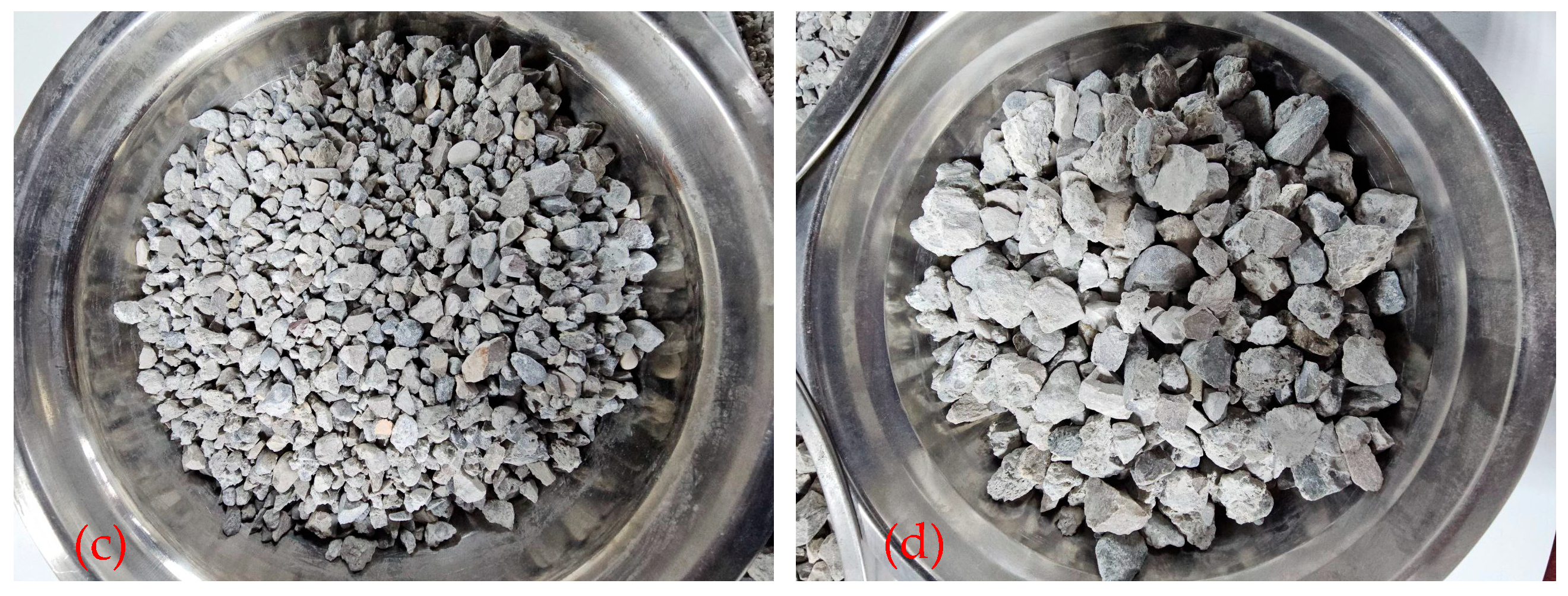

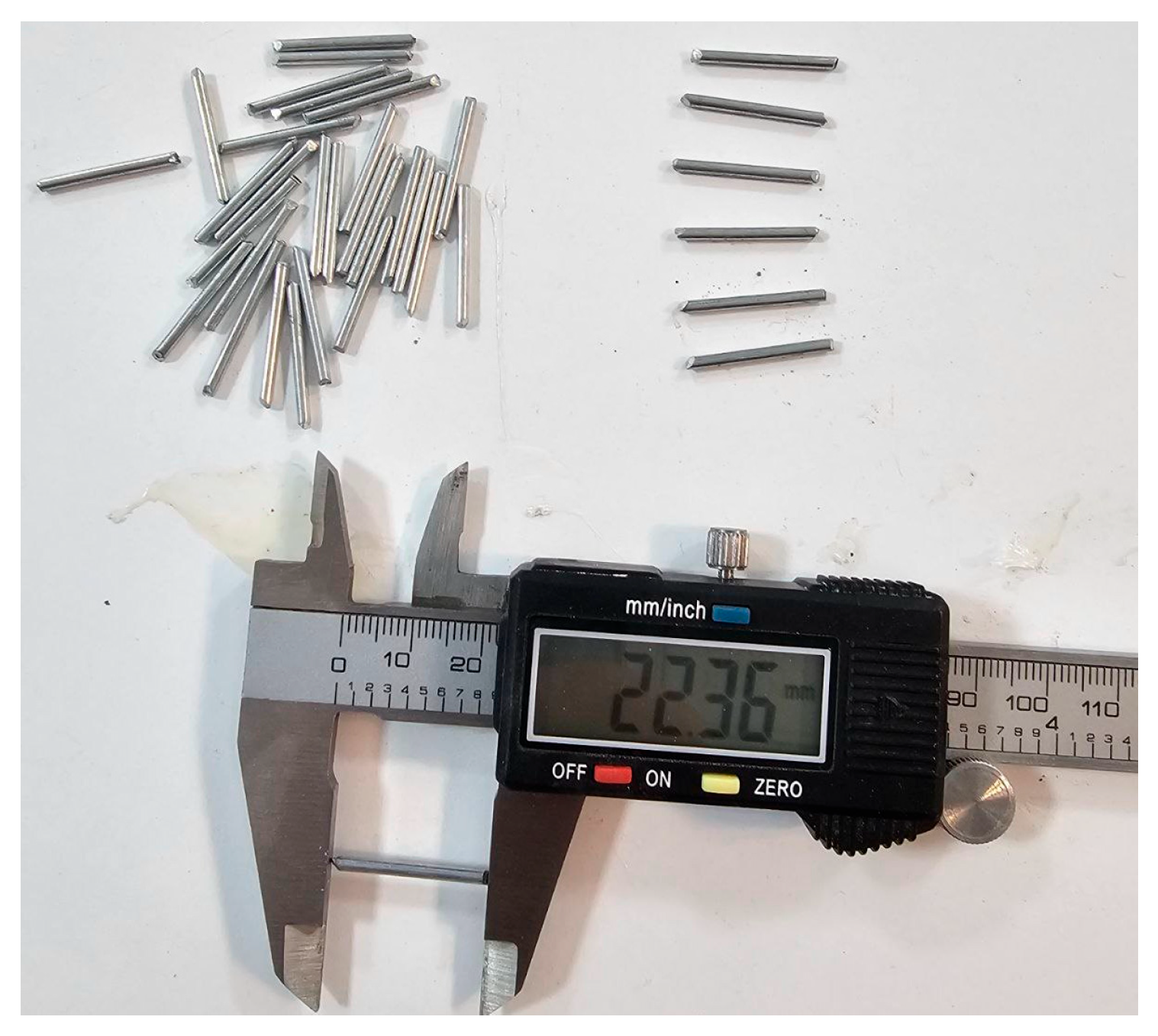
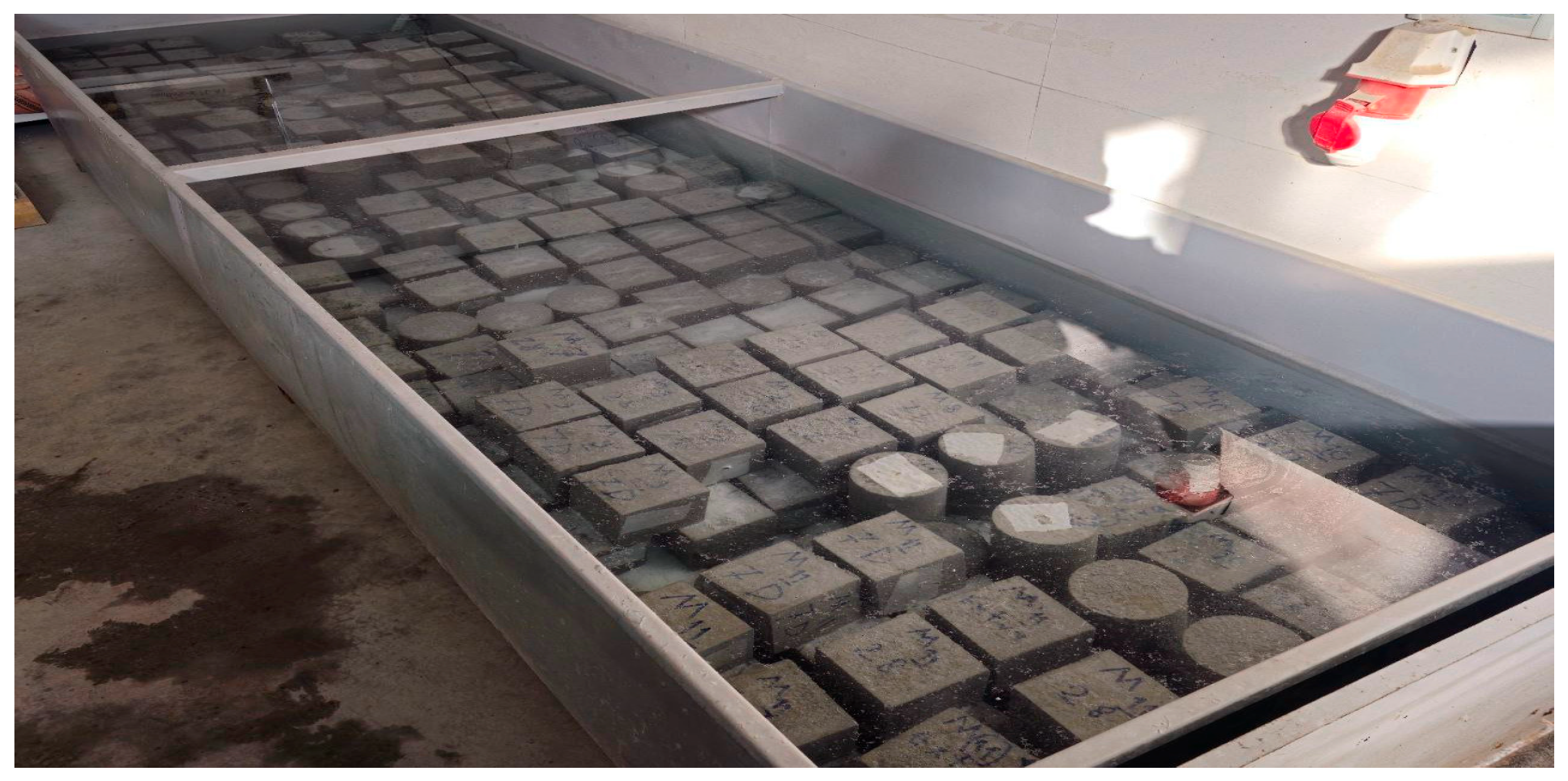
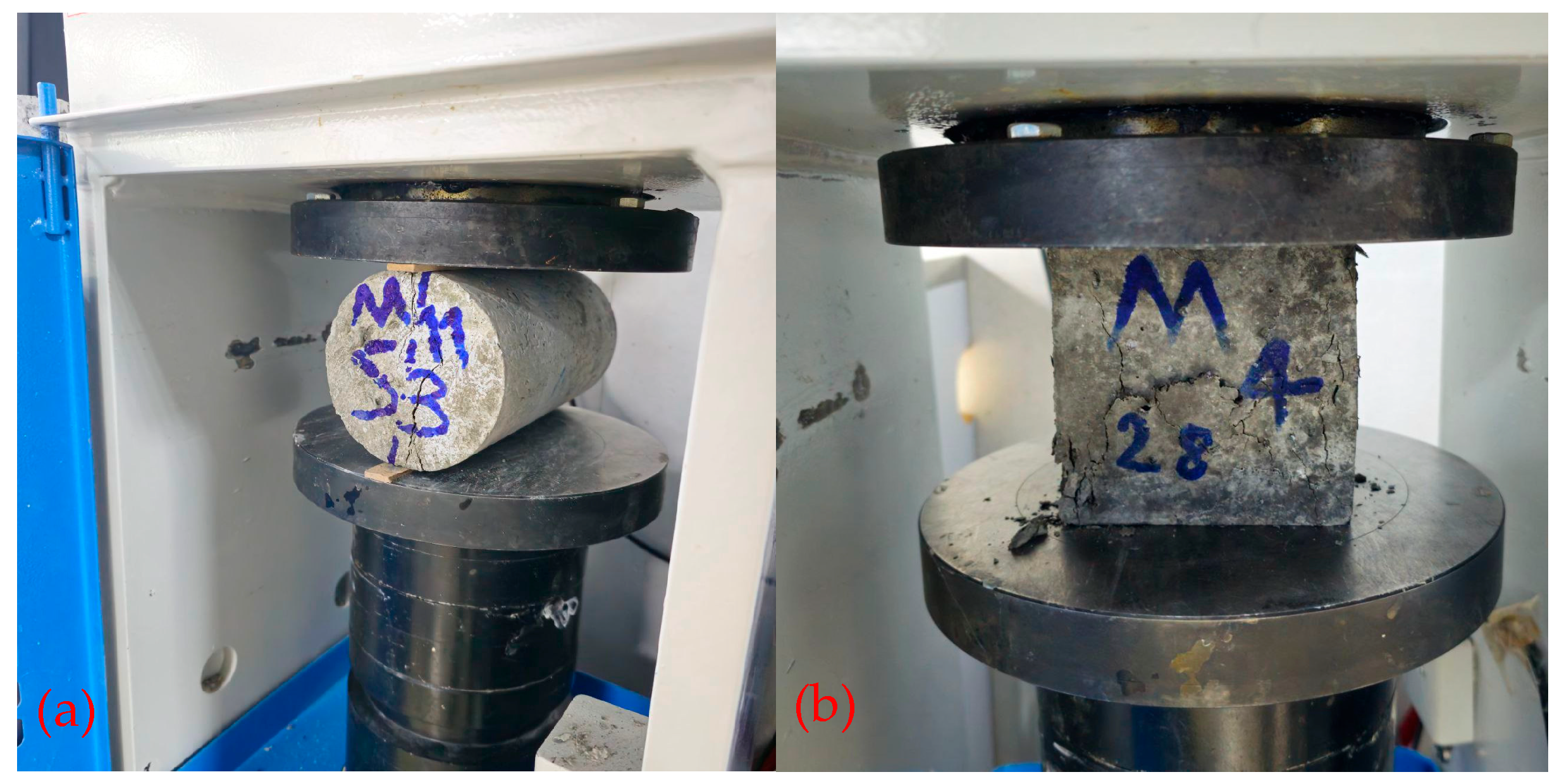
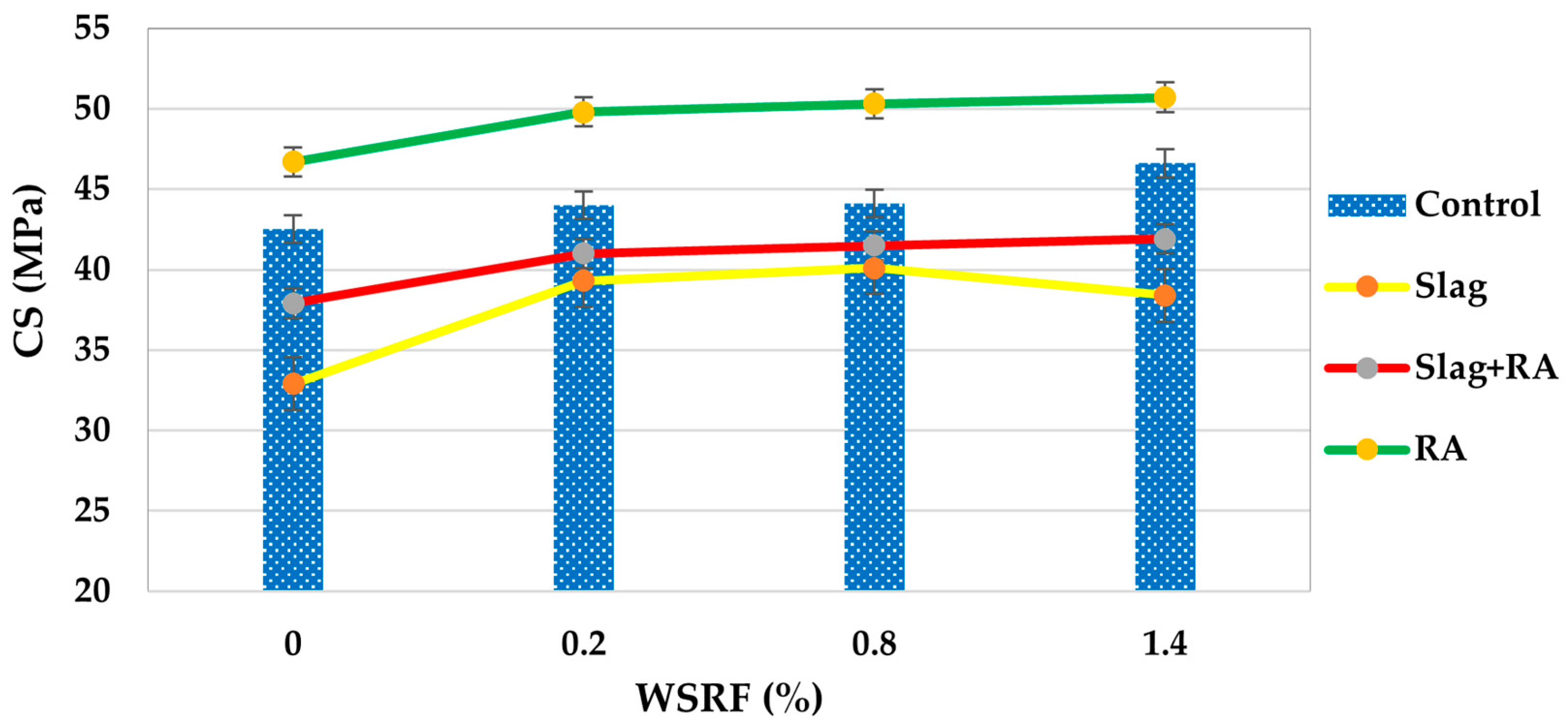
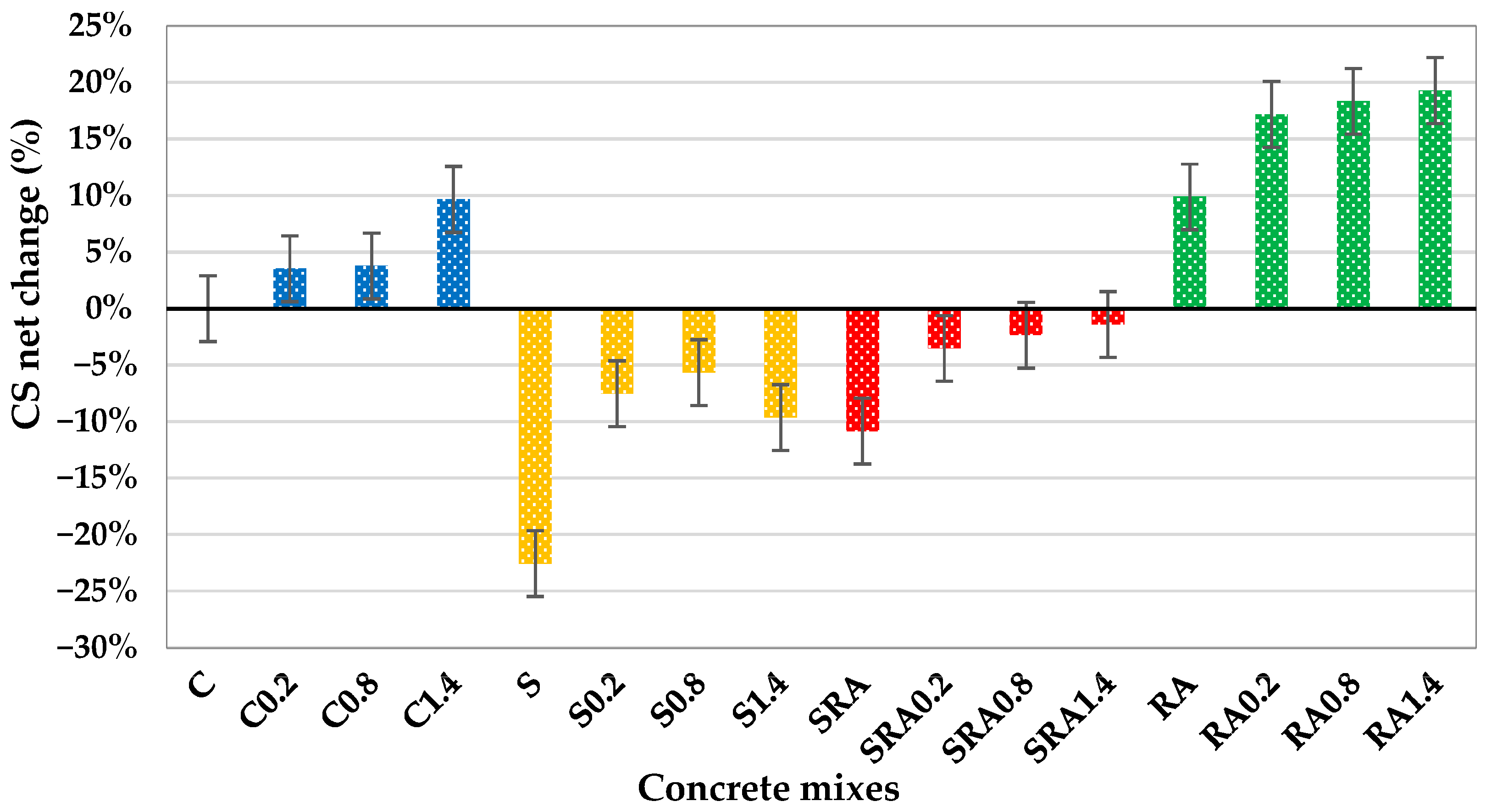



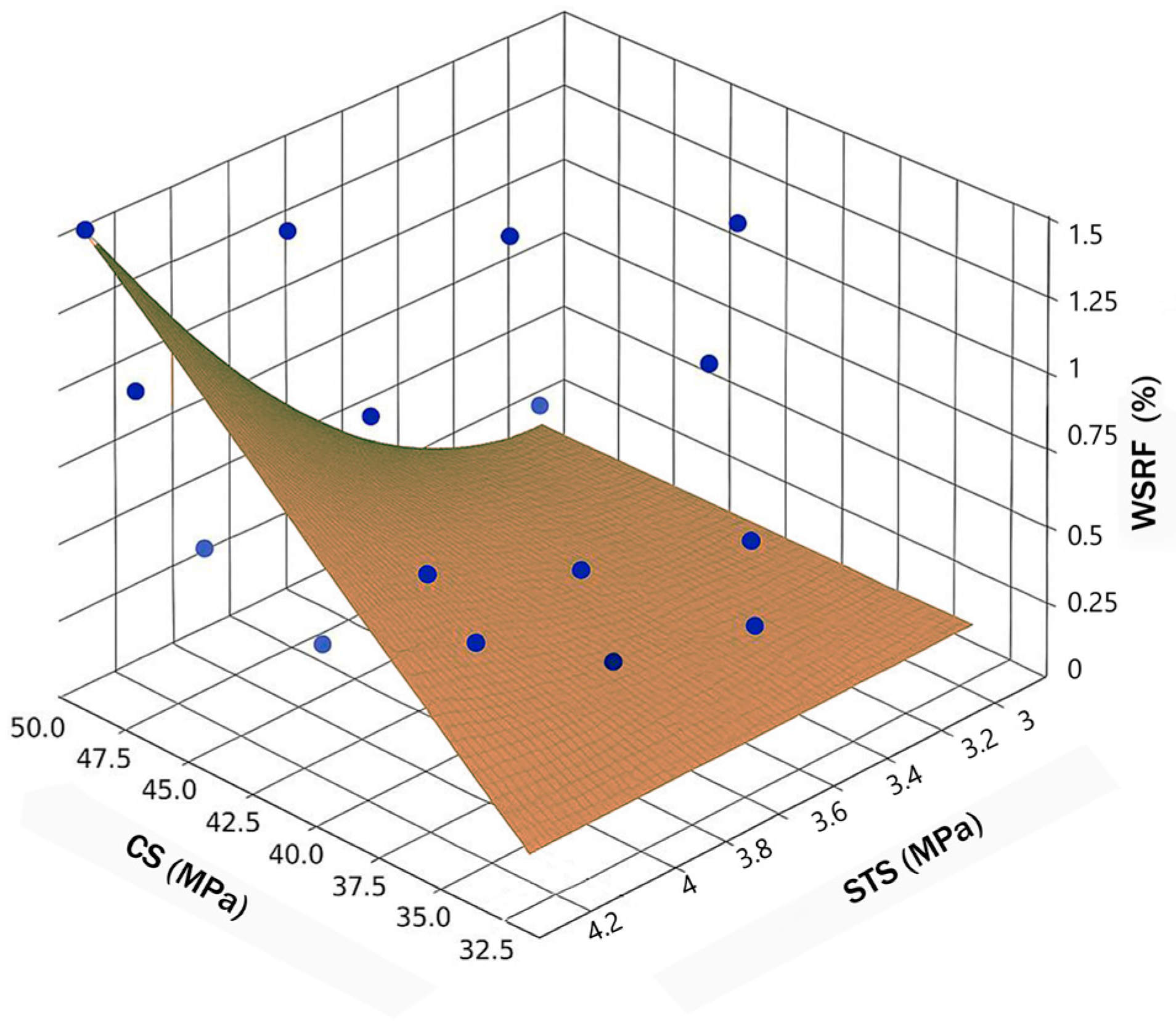
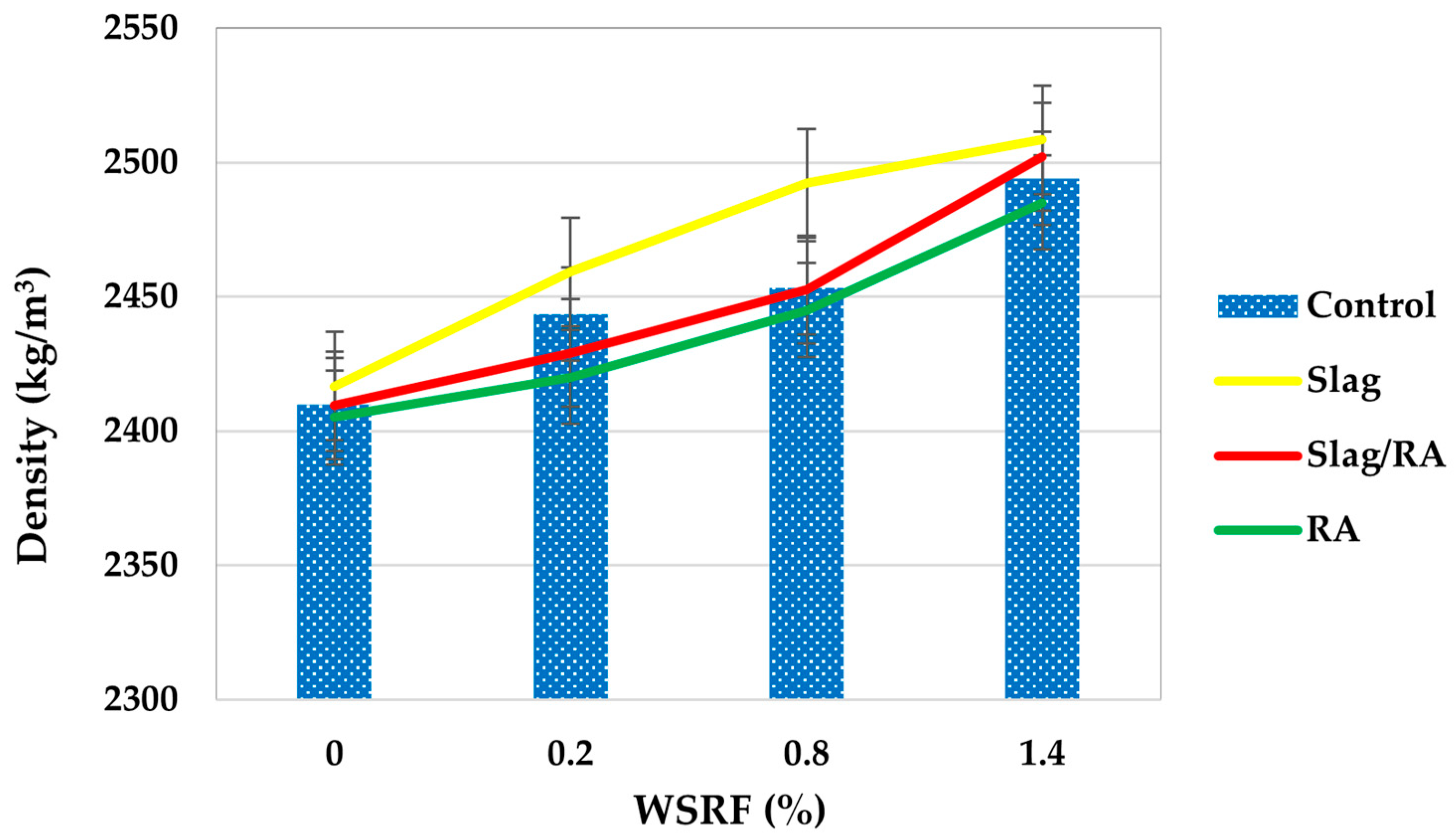

| Oxide/Element | Cement (%) | Steel Slag Powder (%) |
|---|---|---|
| CaO (Calcium Oxide) | 66.2 | 36.2 |
| SiO2 (Silicon Dioxide) | 14.6 | 19.7 |
| MgO (Magnesium Oxide) | 4.1 | 3.6 |
| SO3 (Sulfur Trioxide) | 4.1 | 0.1 |
| Al2O3 (Aluminum Oxide) | 4.0 | 5.2 |
| Fe2O3 (Ferric Oxide) | 3.7 | 31.9 |
| K2O (Potassium Oxide) | 2.5 | 0.1 |
| Others | 0.2 | 2.6 |
| Property | NFA | NCA | RCA |
|---|---|---|---|
| Type | Natural river sand | Natural crushed stone | Processed demolished concrete |
| Maximum size (mm) | 4.75 | 12.5 | 12.5 |
| Specific gravity (ssd) | 2.60 | 2.638 | 2.42–2.55 |
| Water absorption (%) | 1.99 | 0.62 | 3.5–6.0 |
| Shape | Rounded | Angular | Angular with low-adhered paste |
| Surface texture | Smooth | Rough | Rougher due to residual paste |
| Cleanliness (IMPURITY CONTENT) | Low | High | Clean |
| Gradation | Well-graded | Low-graded | Well-graded (after processing) |
| Source | Local river | Local quarry | Soran city demolition waste |
| Property | Value | Unit/Description |
|---|---|---|
| Fiber type | Waste steel rivet fibers | From discarded rivets and metal scraps |
| Shape | Straight, low ribbed | As collected from waste |
| Length (ave) | 22.54 | mm |
| Diameter (ave) | 1.63 | mm |
| Aspect ratio (l/d) | 13.83 | — |
| Density | 7750 | kg/m3 |
| Source | Local manufacturers | Soran, Kurdistan Region |
| Mix No | Mix Code | WSRF (%) | SSP (%) | Cement (kg/m3) | NFA (kg/m3) | NCA (kg/m3) | RCA (%) | Water (kg/m3) | SP (%) |
|---|---|---|---|---|---|---|---|---|---|
| 1 | C | 0 | 0 | 380 | 760 | 1140 | 0 | 185 | 0.5 |
| 2 | C0.2 | 0.2 | 0 | 380 | 760 | 1140 | 0 | 185 | 0.5 |
| 3 | C0.8 | 0.8 | 0 | 380 | 760 | 1140 | 0 | 185 | 0.75 |
| 4 | C1.4 | 1.4 | 0 | 380 | 760 | 1140 | 0 | 185 | 1.0 |
| 5 | S | 0 | 15 | 323 | 760 | 1140 | 0 | 185 | 0.5 |
| 6 | S0.2 | 0.2 | 15 | 323 | 760 | 1140 | 0 | 185 | 0.5 |
| 7 | S0.8 | 0.8 | 15 | 323 | 760 | 1140 | 0 | 185 | 0.75 |
| 8 | S1.4 | 1.4 | 15 | 323 | 760 | 1140 | 0 | 185 | 1.0 |
| 9 | SRA | 0 | 15 | 323 | 760 | 684 | 40 | 185 | 0.5 |
| 10 | SRA0.2 | 0.2 | 15 | 323 | 760 | 684 | 40 | 185 | 0.5 |
| 11 | SRA0.8 | 0.8 | 15 | 323 | 760 | 684 | 40 | 185 | 0.75 |
| 12 | SRA1.4 | 1.4 | 15 | 323 | 760 | 684 | 40 | 185 | 1.0 |
| 13 | RA | 0 | 0 | 380 | 760 | 684 | 40 | 185 | 0.5 |
| 14 | RA0.2 | 0.2 | 0 | 380 | 760 | 684 | 40 | 185 | 0.5 |
| 15 | RA0.8 | 0.8 | 0 | 380 | 760 | 684 | 40 | 185 | 0.75 |
| 16 | RA1.4 | 1.4 | 0 | 380 | 760 | 684 | 40 | 185 | 1.0 |
| Fiber Content | Crack Pattern | Separation | Crack Width | Ductility | Post-Crack Integrity |
|---|---|---|---|---|---|
| 0.0% | Clean, straight | Full | Wide | Brittle | None |
| 0.2% | Jagged, vertical | Partial | Medium | Slight | Low |
| 0.8% | Stable, bridged | Minor | Narrow | Ductile | Moderate to high |
| 1.4% | Bridged, stable | Low | Very narrow | Highly ductile | Excellent |
Disclaimer/Publisher’s Note: The statements, opinions and data contained in all publications are solely those of the individual author(s) and contributor(s) and not of MDPI and/or the editor(s). MDPI and/or the editor(s) disclaim responsibility for any injury to people or property resulting from any ideas, methods, instructions or products referred to in the content. |
© 2025 by the authors. Licensee MDPI, Basel, Switzerland. This article is an open access article distributed under the terms and conditions of the Creative Commons Attribution (CC BY) license (https://creativecommons.org/licenses/by/4.0/).
Share and Cite
Awla, D.D.; Herki, B.M.A.; Sherwani, A.F.H. Low-Carbon Concrete Reinforced with Waste Steel Rivet Fibers Utilizing Steel Slag Powder, and Processed Recycled Concrete Aggregate—Engineering Insights. Fibers 2025, 13, 109. https://doi.org/10.3390/fib13080109
Awla DD, Herki BMA, Sherwani AFH. Low-Carbon Concrete Reinforced with Waste Steel Rivet Fibers Utilizing Steel Slag Powder, and Processed Recycled Concrete Aggregate—Engineering Insights. Fibers. 2025; 13(8):109. https://doi.org/10.3390/fib13080109
Chicago/Turabian StyleAwla, Dilan Dh., Bengin M. A. Herki, and Aryan Far H. Sherwani. 2025. "Low-Carbon Concrete Reinforced with Waste Steel Rivet Fibers Utilizing Steel Slag Powder, and Processed Recycled Concrete Aggregate—Engineering Insights" Fibers 13, no. 8: 109. https://doi.org/10.3390/fib13080109
APA StyleAwla, D. D., Herki, B. M. A., & Sherwani, A. F. H. (2025). Low-Carbon Concrete Reinforced with Waste Steel Rivet Fibers Utilizing Steel Slag Powder, and Processed Recycled Concrete Aggregate—Engineering Insights. Fibers, 13(8), 109. https://doi.org/10.3390/fib13080109







